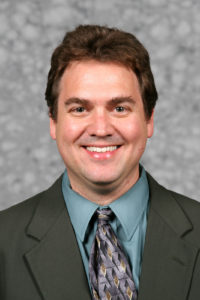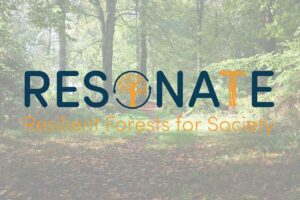It’s now less than 3 months until Trees, People and the Built Environment 4 – our triennial conference on urban greenspace. In advance of the conference we’ll be presenting a series of interviews with some of our featured speakers. This week, we speak with Professor Richard Hauer of the University of Wisconsin.

As a Professor of Urban Forestry at the University of Wisconsin, Richard teaches courses in urban forestry, nursery management, woody plants, dendrology, and introduction to forestry. He received his B.S. from the University of Wisconsin, M.S. from the University of Illinois, and Ph.D. from the University of Minnesota. Rich has conducted research in tree biology, urban forest management, emerald ash borer management, trees and construction, tree risk management, and ice storms. He recently was honoured as the 2018 L.C. Chadwick Award for Arboricultural Research. He has published over 130 publications and presented over 300 talks throughout the world.
Tell us about your presentation:
Our presentation covers the development of a tree preservation program and how it has led to the effective retention of tree health and survival of trees. Prior to the program, trees died at a higher rate and tree health was reduced due to construction. Today there is no difference between trees in construction zones and those outside of construction zones.
Why is your presentation important for our conference?
Our talk will showcase an effective tree preservation program that works. The story covers a forty-year time period with the tree population monitored at four different stages.
What are the biggest challenges facing green infrastructure?
People and the decisions they make are important to the success or failure of trees growing in built environments.
What impact is your work making in the built environment?
Our research has documented how you can have construction and your trees too! The City of Milwaukee developed an effective tree preservation program which our research tested and demonstrated to be effective.
How do we build resilient places for us to live in for the future?
We need to understand both the needs of built environments and also tree biological needs – decisions can be made to best meet the needs of building infrastructure and biology of the green infrastructure.
How did you get into your role?
Pure luck got me to where I am at today. The US farm crisis of the 1980s led me from agriculture to pursuing a horticulture degree with turf management as a focus. It was during my first semester I discovered there are disciplines (e.g. arboriculture & urban forestry) that pertain to trees in communities. You can say I ‘branched off’ from turf to trees and never looked back! My mentors were important in shaping who I am today. The research I was fortunate to become involved with further strengthened my case for how I got to my role. Finally, my current job as an educator allows me to keep abreast of the changes and challenges to growing trees in communities.
Trees, People and the Built Environment 4 will unite built and natural environment professionals from around the world who are working towards the shared goal of enhancing and developing green infrastructure. This acclaimed urban trees research conference will return to the University of Birmingham on 22-23 April 2020. It is a must-attend event for those who work in urban landscapes or the built environment.
Keep up with conference developments – read the programme online, follow us @TheICF






